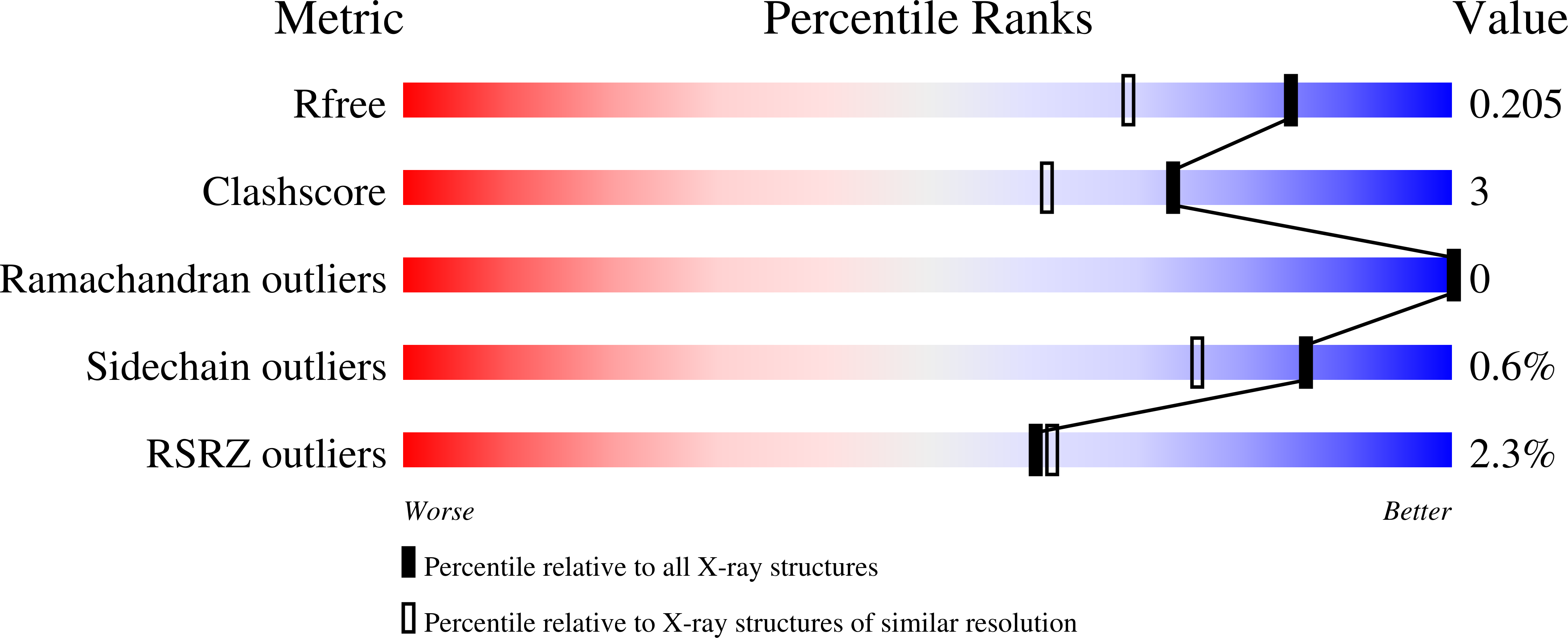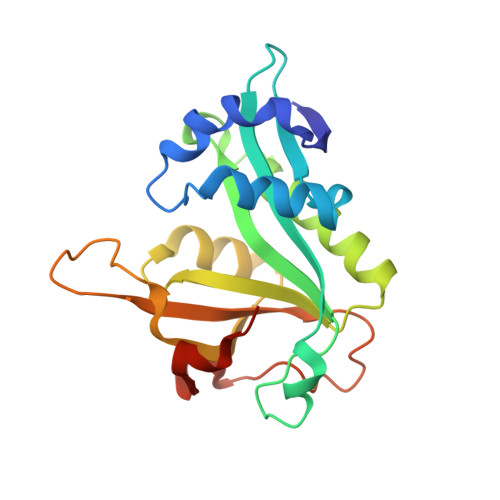Structural basis of Naa20 activity towards a canonical NatB substrate.
Layer, D., Kopp, J., Fontanillo, M., Kohn, M., Lapouge, K., Sinning, I.(2021) Commun Biol 4: 2-2
- PubMed: 33398031
- DOI: https://doi.org/10.1038/s42003-020-01546-4
- Primary Citation of Related Structures:
6ZMP - PubMed Abstract:
N-terminal acetylation is one of the most common protein modifications in eukaryotes and is carried out by N-terminal acetyltransferases (NATs). It plays important roles in protein homeostasis, localization, and interactions and is linked to various human diseases. NatB, one of the major co-translationally active NATs, is composed of the catalytic subunit Naa20 and the auxiliary subunit Naa25, and acetylates about 20% of the proteome. Here we show that NatB substrate specificity and catalytic mechanism are conserved among eukaryotes, and that Naa20 alone is able to acetylate NatB substrates in vitro. We show that Naa25 increases the Naa20 substrate affinity, and identify residues important for peptide binding and acetylation activity. We present the first Naa20 crystal structure in complex with the competitive inhibitor CoA-Ac-MDEL. Our findings demonstrate how Naa20 binds its substrates in the absence of Naa25 and support prospective endeavors to derive specific NAT inhibitors for drug development.
Organizational Affiliation:
Biochemiezentrum der Universit?t Heidelberg (BZH), Heidelberg University, INF 328, 69120, Heidelberg, Germany.


















